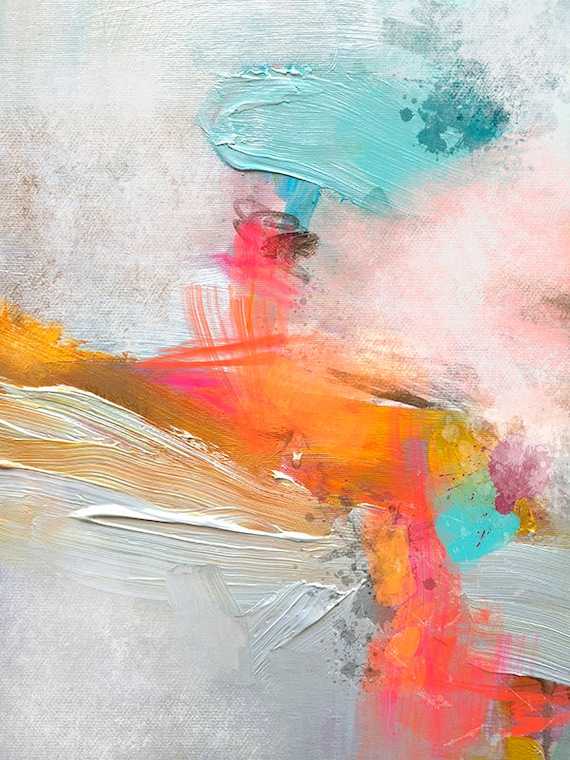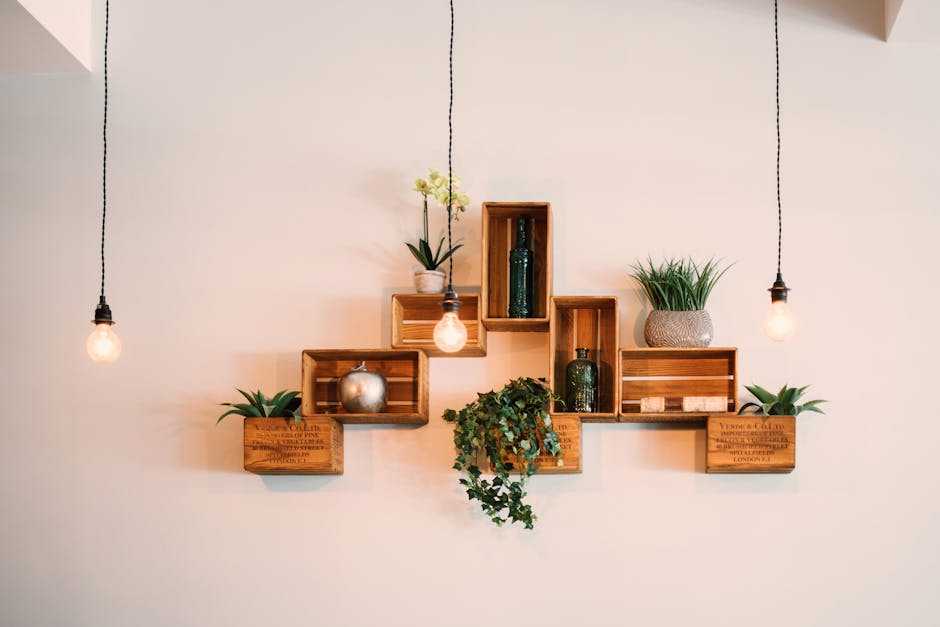Table of Contents
- Exploring the Evolution of Abstract Art through Iconic Masterpieces
- Understanding the Techniques and Mediums that Define Abstract Paintings
- How to Choose the Right Abstract Art for Your Space
- Top Contemporary Abstract Artists to Follow and Collect
- Q&A
- Concluding Remarks
Exploring the Evolution of Abstract Art through Iconic Masterpieces
Abstract art has traveled a fascinating journey, evolving from its rudimentary beginnings in the early 20th century to the complex expressions that dominate contemporary galleries. Early pioneers, such as Wassily Kandinsky, sought to convey emotions through non-representational forms, using color and shape as their primary vehicles. Kandinsky’s works, infused with rhythm and movement, defy the constraints of traditional figurative art, inviting viewers to engage on an emotional level rather than a literal one.
As we move through the decades, artists like Piet Mondrian significantly impacted the trajectory of abstract art. His famous Composition series employs a grid of bold colors and clear lines that suggest harmony and order amidst chaos. Mondrian’s philosophy of balance through simplicity has inspired countless artists, emphasizing the power of geometric shapes to evoke feelings of tranquility and balance. The striking visual clarity of his work demonstrates how abstraction can communicate complex ideas without the need for recognizable subject matter.
The rise of Abstract Expressionism in the mid-20th century marked a bold shift in how artists expressed their creativity. Figures like Jackson Pollock introduced new techniques—most notably, his drip painting method—that emphasized spontaneity and personal expression. This approach not only redefined the act of painting as a medium but also turned the artist’s emotional landscape into the canvas itself. Pollock’s iconic works encourage the viewer to contemplate the movement of paint as an extension of the artist’s psyche, making each piece a vivid, dynamic experience.
Today, the legacy of these iconic masterpieces continues to inspire contemporary artists who explore the boundaries of abstract art. The advent of digital media has allowed for even greater experimentation, blending traditional techniques with modern technology. Some artists utilize interactive installations and virtual reality, pushing the audience’s engagement with abstract concepts even further. This ongoing evolution reflects a key trend in abstract art: a constant redefinition of what art can be, ensuring that the conversation around abstraction remains vibrant and relevant.


Understanding the Techniques and Mediums that Define Abstract Paintings
Abstract paintings thrive on the power of freedom, self-expression, and imagination, with artists often employing a mixture of techniques to convey emotions and ideas that words simply cannot capture. Unlike traditional representational art, abstract works prioritize form, color, and line, serving as a visual language of their own. Techniques such as dripping, splattering, and layering paint have become synonymous with abstract art, allowing artists to bring dynamism and spontaneity to their creations. The use of unorthodox tools, from brushes to unconventional items like palette knives or even fingers, enables artists to explore texture in unique ways.
Various mediums play a crucial role in defining the character of abstract paintings. While acrylics and oils remain popular, artists often experiment with watercolors, inks, and mixed media. Acrylic paints, known for their quick drying time, allow for rapid application of layers and textures, while oil paints provide a richness and depth unlikely to be matched by any other medium. Watercolors, on the other hand, lend themselves to transparency and fluidity, creating ethereal qualities in abstract compositions. Artists often blend these mediums to exploit their respective strengths, leading to innovative textures and visual effects.
Color selection is another defining aspect of abstract paintings. Artists may choose colors based on emotional associations, personal significance, or even color theory principles. Various color schemes, whether monochromatic, analogous, or complementary, guide the viewer’s emotions and understanding of the artwork. For instance, a vibrant palette might evoke feelings of joy and energy, while a series of muted tones may suggest introspection and melancholy. This strategic use of color can transform a simple canvas into a profound experience, prompting viewers to engage with the art on a deeper level.
| Medium | Characteristics | Typical Techniques |
|---|---|---|
| Acrylic | Quick-drying, versatile | Layering, pouring, and blending |
| Oil | Richness, slow-drying | Glazing, impasto, and scumbling |
| Watercolor | Transparent, fluid | Washing, wet-on-wet, and dry brush |
| Mixed Media | Diverse textural possibilities | Collaging, incorporating found objects |


How to Choose the Right Abstract Art for Your Space
Choosing the perfect abstract art piece for your environment can transform the atmosphere of your space. The initial step in this creative journey is to understand the potential impact of color. Colors evoke emotions; for instance, vibrant hues can energize a room, while softer palettes can create a calming effect. Consider the existing color scheme of your area: do you want the artwork to complement or contrast with your decor? Assess how much natural light your space receives, as it can change the perception of colors throughout the day.
Next, think about the scale of the artwork in relation to your room’s dimensions. Artwork should enhance the proportions of a room rather than overwhelm it. Large pieces work well in open spaces or above key furniture like sofas, while smaller works can create a charming gallery effect when grouped together. When selecting size, you may find it useful to sketch a simple layout or use painter’s tape on the wall to visualize how different sizes will fit in your space.
Another critical aspect is the artwork’s theme and mood. Abstract art varies widely, from energetic brush strokes to tranquil forms. Consider what emotions you wish to convey and how they align with the intended use of the space. For example, a workspace may benefit from dynamic and motivating artwork, whereas a bedroom may be better suited for serene and contemplative pieces. Think also about the story behind the piece; does it resonate with your personal journey or interests?
don’t overlook the frame and presentation of your chosen artwork. Framing can elevate a piece, enhancing its appeal and ensuring it fits seamlessly into your decor; for instance, a sleek modern frame can accentuate a contemporary abstract painting, while a more ornate frame can add character to a classic style. Consider how the presentation of the art complements your chosen design elements. One last thought: take your time and choose pieces that resonate deeply with you, allowing your space to display not just beauty but also personal significance.


Top Contemporary Abstract Artists to Follow and Collect
In the vibrant world of contemporary abstract art, several artists stand out for their innovative approaches and unique styles. These creators challenge the boundaries of traditional painting, diving into exploration and expression that captivates art lovers worldwide. Choosing to follow and possibly collect artworks from these talented individuals can enrich your personal art portfolio and inspire creativity in your own life.
One artist to watch is Julie Mehretu, known for her large-scale, layered compositions that blend paint, drawing, and printmaking. Her work reflects themes of geography, architecture, and globalization, creating an immersive experience for viewers. Another influential figure in abstract art is Mark Bradford, whose mixed-media techniques utilize found materials, exploring social and political narratives. His bold colors and textures invite viewers to contemplate deeper meanings within the chaos.
Additionally, consider exploring works by Josef Albers, a transitional figure who played a significant role in both abstract art and design. His research into color theory, particularly his iconic series, Homage to the Square, continues to influence contemporary artists. Kerry James Marshall brings a unique perspective to the genre, incorporating personal and cultural histories into his vibrant pieces that celebrate Black life and identity.
| Artist | Notable Style | Themes Explored |
|---|---|---|
| Julie Mehretu | Layered compositions | Geography & Globalization |
| Mark Bradford | Mixed media | Social & Political Narratives |
| Josef Albers | Color Theory | Perception & Form |
| Kerry James Marshall | Vibrant Color Usage | Cultural Identity |
Collectively, these artists embody the essence of contemporary abstraction. They not only challenge viewers with their complex visual languages but also enrich the broader art dialogue. Engaging with their works can broaden your understanding of abstract art and its impact on modern society, sparking discussions that transcend the canvas.
